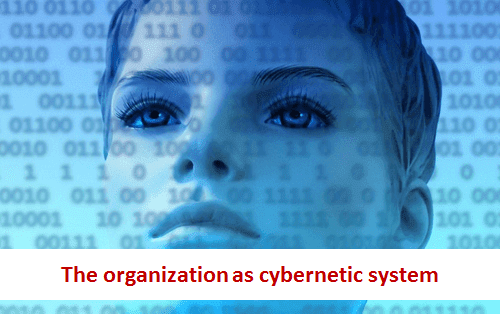
Cybernetic systems are like a car
Cybernetic systems can be compared to a car. A cybernetic system (a car, an organization, a household) consists at least of the following elements:
- an objective (without a goal, steering makes no sense);
- information about the internal pace of the business and the environment (without information you not know where you are, thus formulating sub objectives becomes very difficult);
- enough time and capacity to process the information (if a car has a high speed and suddenly another car appears from the right, braking will be very difficult and the results could be disastrous);
- a model of the system to manage (if you have no idea how a car works, how will you know that a particular steering measure will have impact?);
- sufficient steering measures (enough variables that can influence system).
Use a model to manage the enterprise
The manager uses a model of the system to manage the organization. Goals, critical success factors, key performance indicators, measures and dimensions describe such a steering model. In a next blog, I will expand on this subject. An example may clarify the significance of the model of the system to manage.
A multi-dimensional model
In a multidimensional model, measures and dimensions describe the information a manager needs (often cubes are used; BARC is currently investigating OLAP). These items are identified as critical in order to manage the organization, but the information about when a particular measure is at a critical level is not supplied.
An example
John is driving a car and sees, as he joins the highway, that he has 5 litres of fuel remaining in the fuel tank. From this point, John must drive 60 kilometres to arrive at his destination, London. He passes a sign stating that there is a petrol station 1 kilometre away. If John does not know that the car is using, on average, 1 litre of petrol every 5 kilometres, he cannot make an appropriate decision.
Meta information is needed for effective interaction
This example will make clear that such meta information is important for effective interaction between a human and a system. Integrating such business logic with the user interface (putting the most complex business logic in an ETL process can be wise) can alert the manager that things will go wrong if no action is undertaken and can therefore prevent faulty decision making.
Have enough capacity to process information
Cybernetic systems should furthermore have enough time and capacity to process the information. However, once the information is processed a decision should be made in order to respond to the information. It is also important that managers have enough time and capacity to work out and implement a decision.
The more complex, the less flexibility
The response of a car driver can be too late if the brakes are not working well. Imagine two types of vehicles, a passenger car and a truck, both driving at 60-mph. Assume that both drivers get the signal to stop at the same time and both have proper braking systems. The truck stopped a few seconds later because he has more weight and a more complicated system. The more complexity a system has, the less flexibility to respond and in turn decisiveness decreases (Tideman, 1993).
Large and complex organizations should see signals earlier
This metaphor makes it clear how larger and more complex organizations should be able to perceive the signal much earlier. In terms of the user interface business intelligence systems, we might conclude that even a slight divergence in terms of percentage of a measure should be communicated earlier or more outstanding to the manager. This paradigm holds true for two passenger cars moving at different speeds. The car that is travelling faster needs more time to brake. Consequently, organizations that increase or decrease for a particular measure with a high speed should be notified about emerging threats with a stronger signal.
Business Intelligence Watching: The Organization As Cybernetic System >>>>> Download Now
ReplyDelete>>>>> Download Full
Business Intelligence Watching: The Organization As Cybernetic System >>>>> Download LINK
>>>>> Download Now
Business Intelligence Watching: The Organization As Cybernetic System >>>>> Download Full
>>>>> Download LINK ds